- Issue 4 Pages 233-
- Issue 3 Pages 165-
- Issue 2 Pages 43-
- Issue 1 Pages 1-
- |<
- <
- 1
- >
- >|
-
Shinnosuke Oguma, Makoto Taga2024 Volume 88 Issue 4 Pages 233-242
Published: November 15, 2024
Released on J-STAGE: November 27, 2024
JOURNAL FREE ACCESSTo understand the occurrence patterns of eggs and larvae of the Japanese anchovy Engraulis japonica in coastal waters of Ibaraki Prefecture, sampling of eggs and larvae and observation of environmental conditions were conducted from April to September 2018–2022, and the biological and physical data were analyzed to characterize their spatiotemporal dynamics. Egg densities of the species were relatively high from April to August, and larval densities were high from May to September. Although there are differences between years and/or months, eggs and larvae tended to be more abundant near the coast, in the southern part of the survey area, and/or around the Kuroshio front. Applications of generalized linear models suggested correlations of densities of eggs and larvae with latitude, water temperature, current velocity, current direction, and amount of plankton. The egg densities likely reflected spawning intensity, as temperature and/or food conditions could be favorable for spawning in the southern part of the survey area (April), near the coast (April to August), and around the Kuroshio front. In addition to spawning intensity, transport to the survey area and passive accumulation in the Kuroshio front would also increase the larva densities.
View full abstractDownload PDF (5103K) -
Hideo Sakaji, Atsushi Nishimoto, Masayuki Yoshikawa, Akihiro Manabe, S ...2024 Volume 88 Issue 4 Pages 243-251
Published: November 15, 2024
Released on J-STAGE: November 27, 2024
JOURNAL FREE ACCESS“Ebisuki” is a unique fishing method for shrimps carried by strong ebb currents at night, using scoop nets and lights on small boats in Lake Hamana, Japan, a semi-enclosed brackish lake connected to the Pacific Ocean. We examined temporal changes in the body size of Penaeus japonicus in the summer of 2020 and 2021 by “Ebisuki”. P. japonicus was predominant in the five penaeid species collected. Carapace length (CL) ranged from 14.2–33.1 mm, and temporal differences in size were not observed. CL of both sexes on the same sampling day were identical, and genital organs were almost incomplete. In the mark-recapture experiments in 2022 and 2023, only one individual was recaptured at the same position of the release after two days. These results indicate that P. japonicus was carried by the tidal ebb and flow around the research site until ultimately carried out to the Pacific Ocean in summer before maturation. Almost all the specimens were estimated to be from the late spawned group, which spawn in autumn and recruit in the following summer. This indicates a scarcity of large adults producing the early spawned group, which spawns in early summer and recruits in autumn of the same year.
View full abstractDownload PDF (735K)
- |<
- <
- 1
- >
- >|